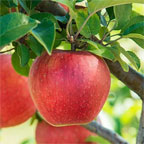- Q.My Creeping Myrtle Has Always Been Green After Snow Melts. Now Looks Dead. Is It Or Will It Come Back? - I have had beautiful creeping myrtle in the front of my house for years. It grows naturally up here in ...
- Q.My Annual Vinca Plants Are Dying, Gradually Over Time, All Summer. What Can Cause This? - annual vinca pants are planted in containers all over my yard, some in sun, some in shade. Several weeks ago ...
Q.My Creeping Myrtle Has Always Been Green After Snow Melts. Now Looks Dead. Is It Or Will It Come Back?
I have had beautiful creeping myrtle in the front of my house for years. It grows naturally up here in Northern Michigan. This past fall I had additional landscaping done in other areas of my yard. As part of the fall clean up the gardeners did power blowing of fallen leaves including leaves within the myrtle. Now that the snow has melted, my beautiful myrtle looks dead. Could the power blowing have removed needed insulation? Will it come back? Also of note, I had one tree in the area removed as my tree person recommended it due to general condition of tree. Myrtle has a southern exposure and I did keep it watered (per recommendation of my gardener, especially when there was more sun exposure after tree removed) although in past years the myrtle was never watered. The myrtle in the yards of my neighbors is all looking green. I am distraught.
- A.
I think it was the additional sun that did it in. Periwinkle grows best in part shade.
https://www.gardeningknowhow.com/ornamental/groundcover/periwinkle/growing-periwinkle.htm
Was this answer useful?00
Q.My Annual Vinca Plants Are Dying, Gradually Over Time, All Summer. What Can Cause This?
annual vinca pants are planted in containers all over my yard, some in sun, some in shade. Several weeks ago they began dying, container at a time.
- A.
If your soil has been wet this year, it could be a fungal disease. This will spread from plant to plant if you don't remove the affected plants. Here's an article about it.
https://www.gardeningknowhow.com/ornamental/flowers/annual-vinca/vinca-plants-problems.htm
Was this answer useful?00



